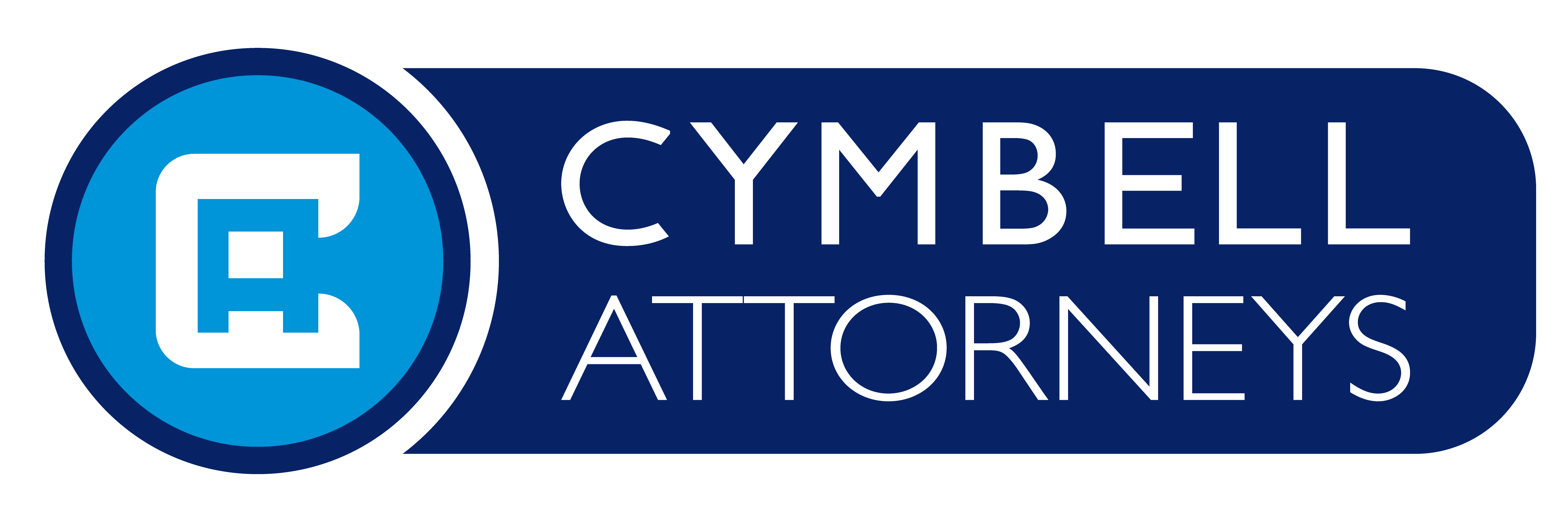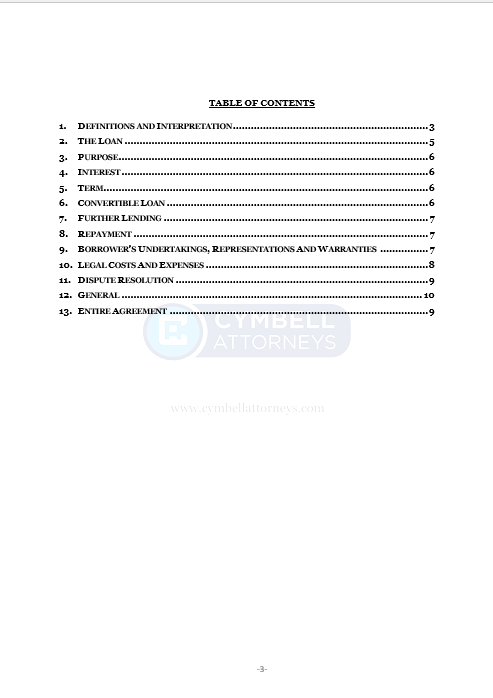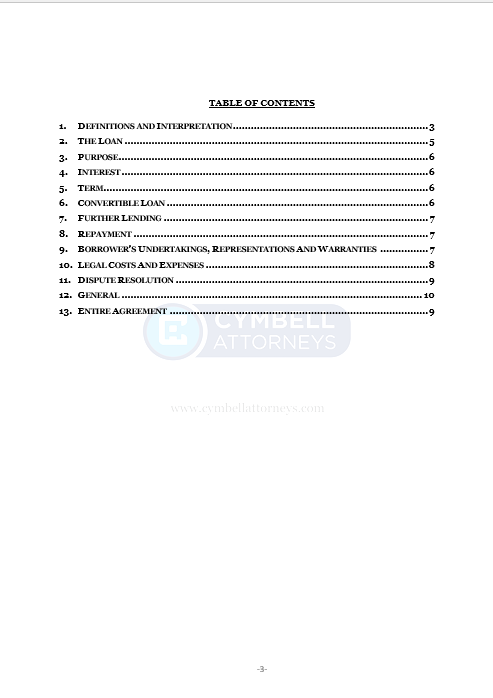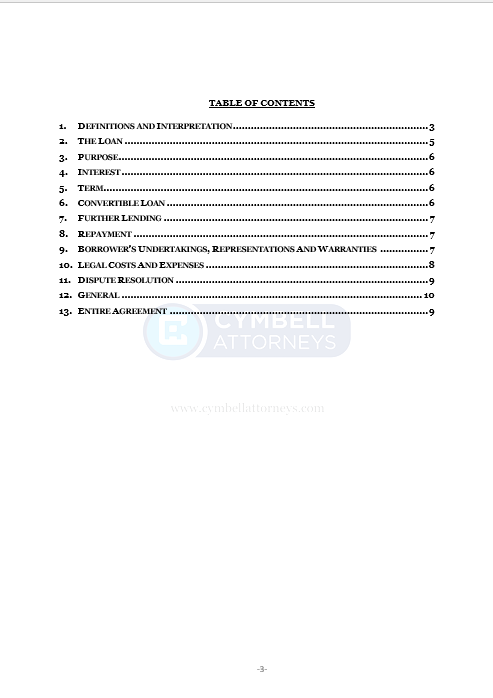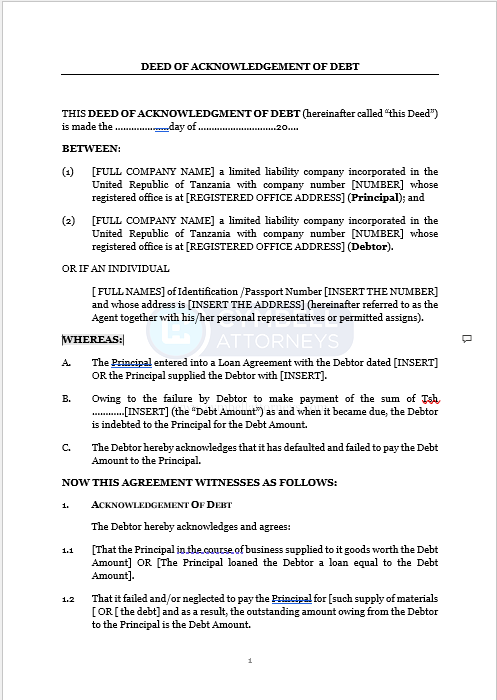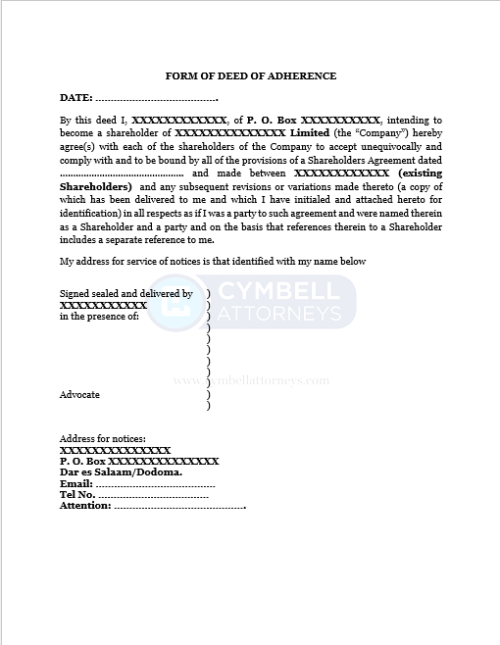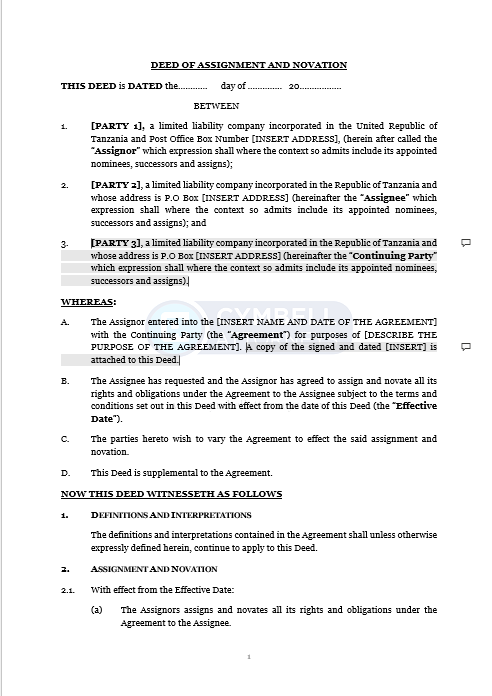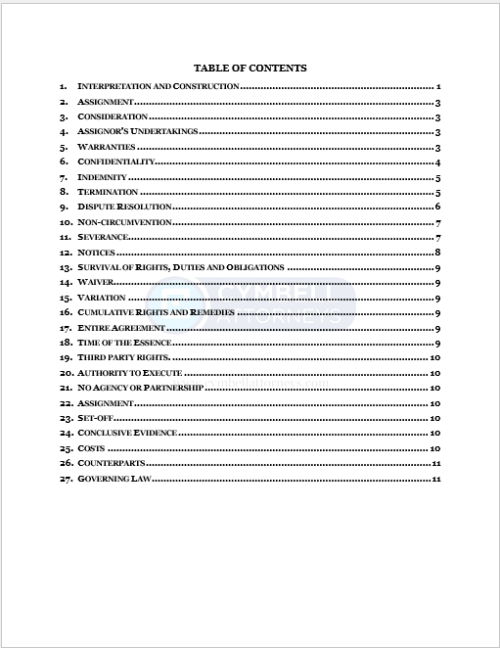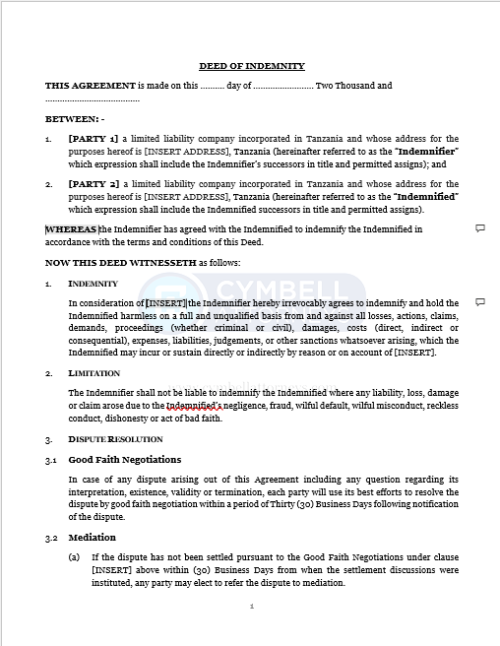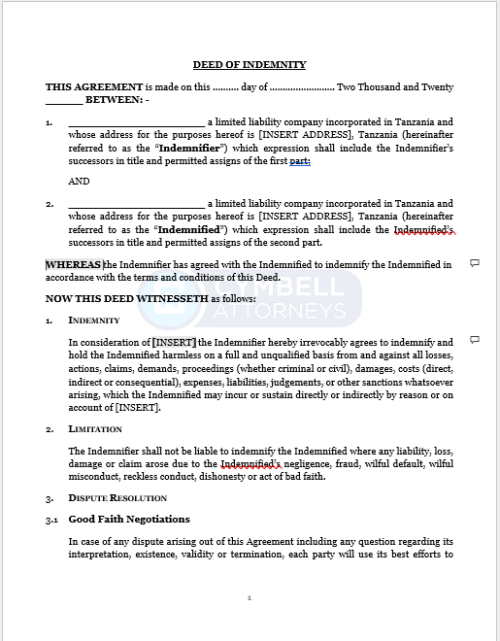Notes:
A Deed of Assignment of Trademark is a document through which the registered proprietor of a trademark transfers his/her/its rights, title and interest in the trademark to a third party. This gives the third party the right to use the trademark of the owner.
Once the Deed of Assignment is done it is required to be registered with the Registrar of Trademarks.
The difference between an assignment and a trademark is that a license allows the licensor to retain their rights and interests in their IP while an assignment transfer all of the assignor’s rights and interest to the assignee.
This Deed is applicable in the following scenarios:
- where the assignment is absolute; and
- where the goodwill of the business is being assigned.
